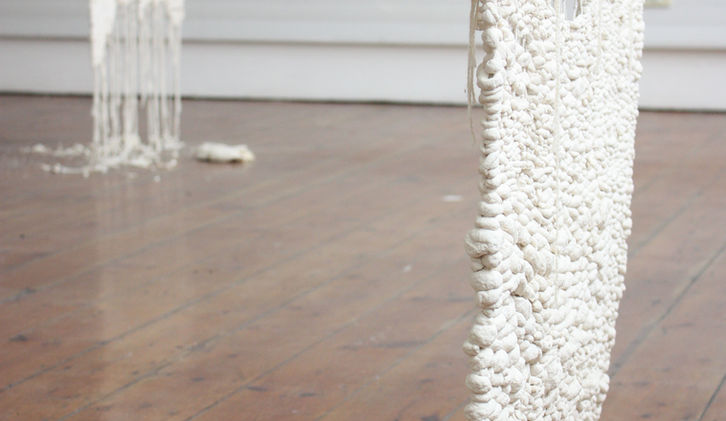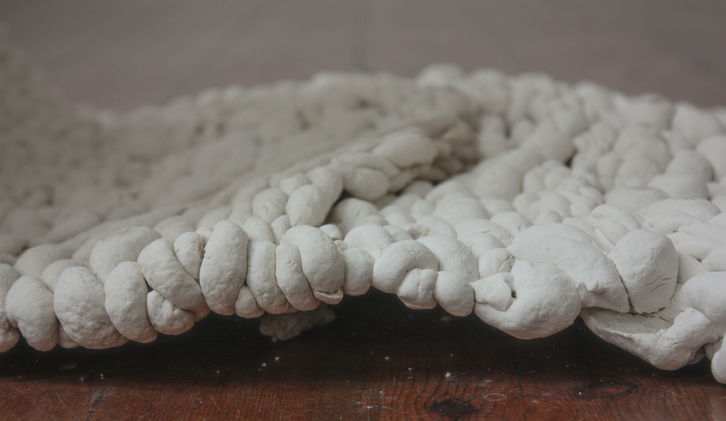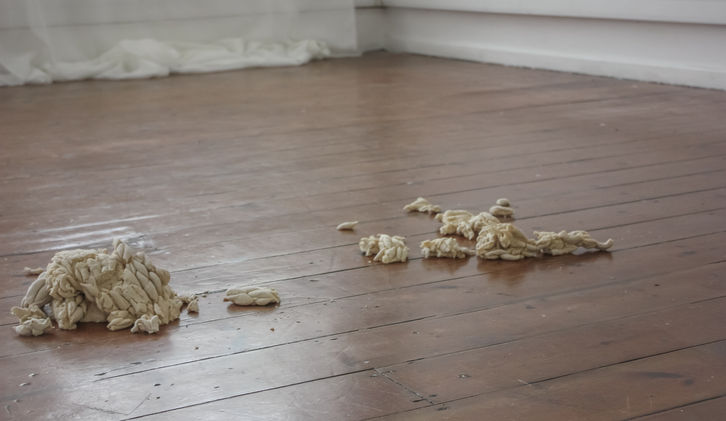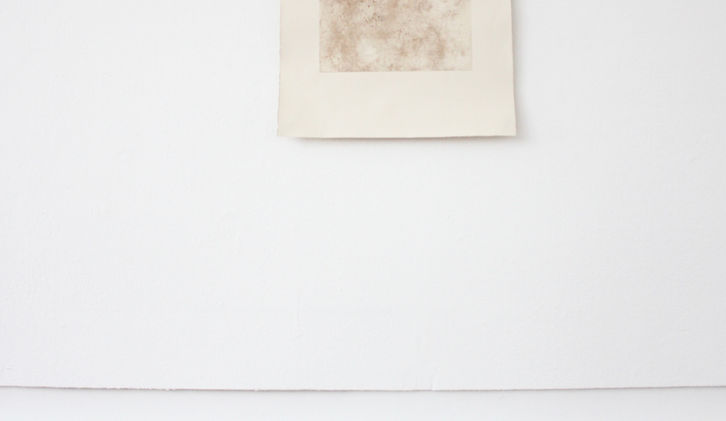CONTINGENCIES
The installation titled, Contingencies (2019), evaluates the relationship between time, temporality and manual processes in art-making. Slow processes, such as kneading and weaving, are explored as potential methods to promote a consciousness of ‘being’. An ephemeral material, like raw dough, functions as a vital medium with which to investigate and reflect on the everyday, the passage of time and the possible materiality of it. It mirrors the cumulative effect of time – an endless, gradual overlapping of moments, hesitations and durations. The ageing dough sculptures become imbued with the artist's own temporality and energy. Left unbaked, the pieces are able continuously evolve, age, and take on an indefinite lifespan of their own. Suspended between states of preservation and incompleteness, it is as if they are in continuous states of ‘becoming’.
Using dough as a means of documenting time can act as a vessel for experiencing one's own temporal relationship with the world. Many associations and memories of dough are deeply connotative and subjective. As a domestic material with connotations to ‘the everyday’, bread (or dough) is classified as a necessity of daily life. Its ‘everydayness’ allows for a certain kind of familiarity - making it more accessible. Yet, a new kind of recognition of bread dough’s qualities, capabilities and potentialities is introduced; thrusting the audience out of their everyday inattentiveness towards a heightened sense of perception and experience.
The repetitive, rhythmic action of weaving can be interpreted as an allegorisation of time’s non-linear, cyclical nature. As a symbol of production, it is transformed into an endless, unproductive act that is ever evolving and unpredictable; a pursuit without purpose and end. The traditionally static, structural grid of weaving is disrupted and transformed into something more fluid. The grid allows the artist to fluctuate between the static and the fluid. This helps to reaffirm the power of process, as opposed to formal, explicit and codified knowledge. Through this hidden, unspoken knowledge based on experiences, sensations, intuition, observations, and internalised information emerge.
The making process is intensely time-based and cannot be completed in one day. As the work develops, previous layers of dough age, dry out and eventually harden. It becomes more brittle by the day. Making becomes evident within the resulting works. Everything that is marked on the surface, remains visible to the audience. The audience is encouraged to perceive the gestation of the pieces, layer after layer, imagining and re-activating the motions of the hands and body that created it. It seems that the more you look at the woven dough pieces, the more they seem to move. However, for this movement to be registered, time and patience are required.
























